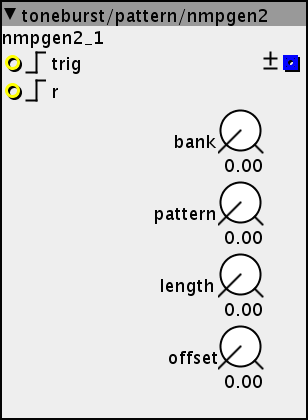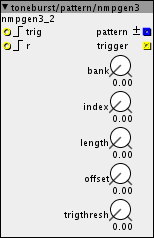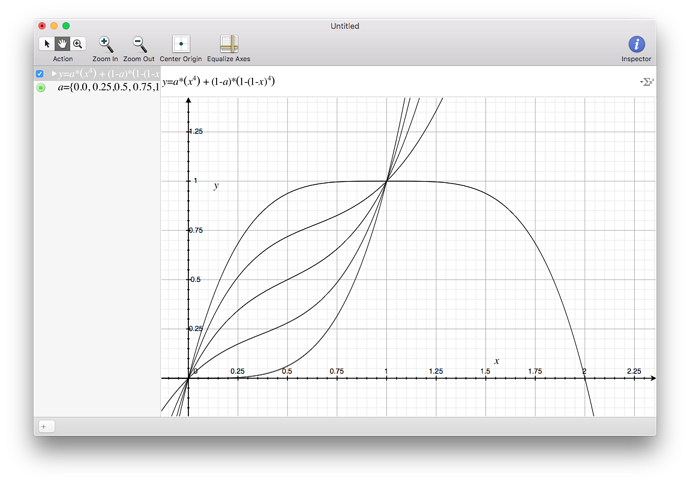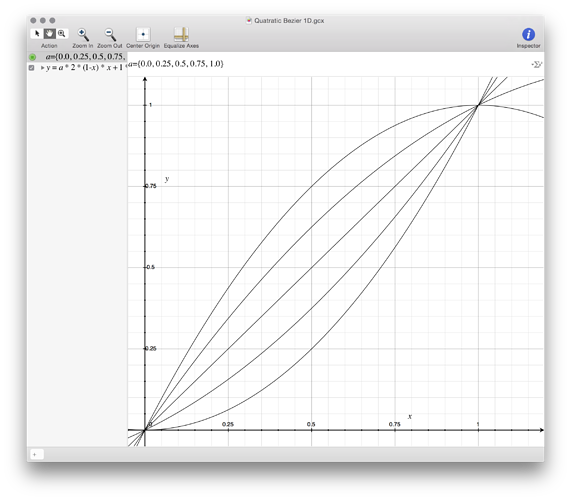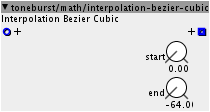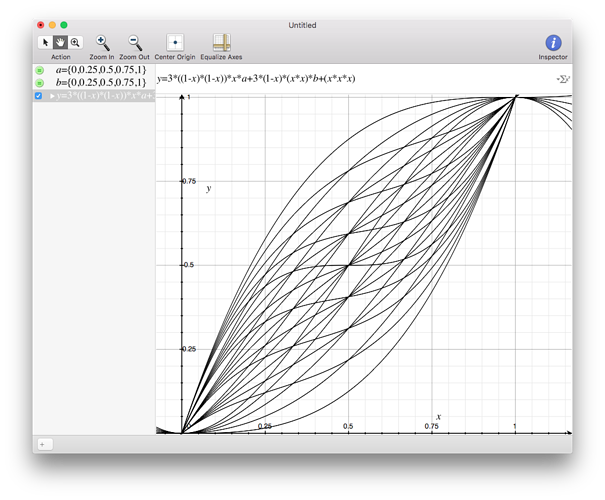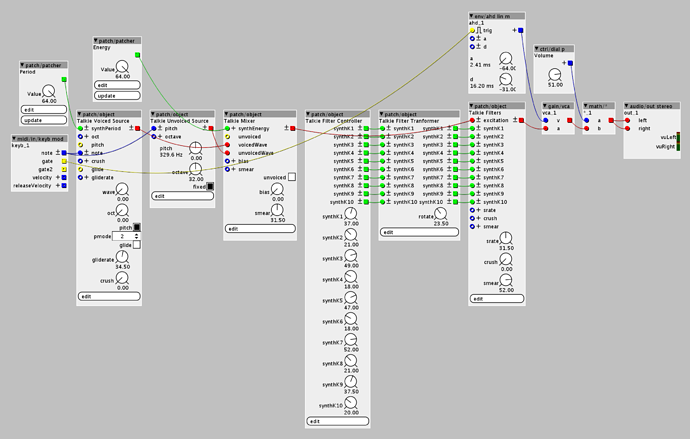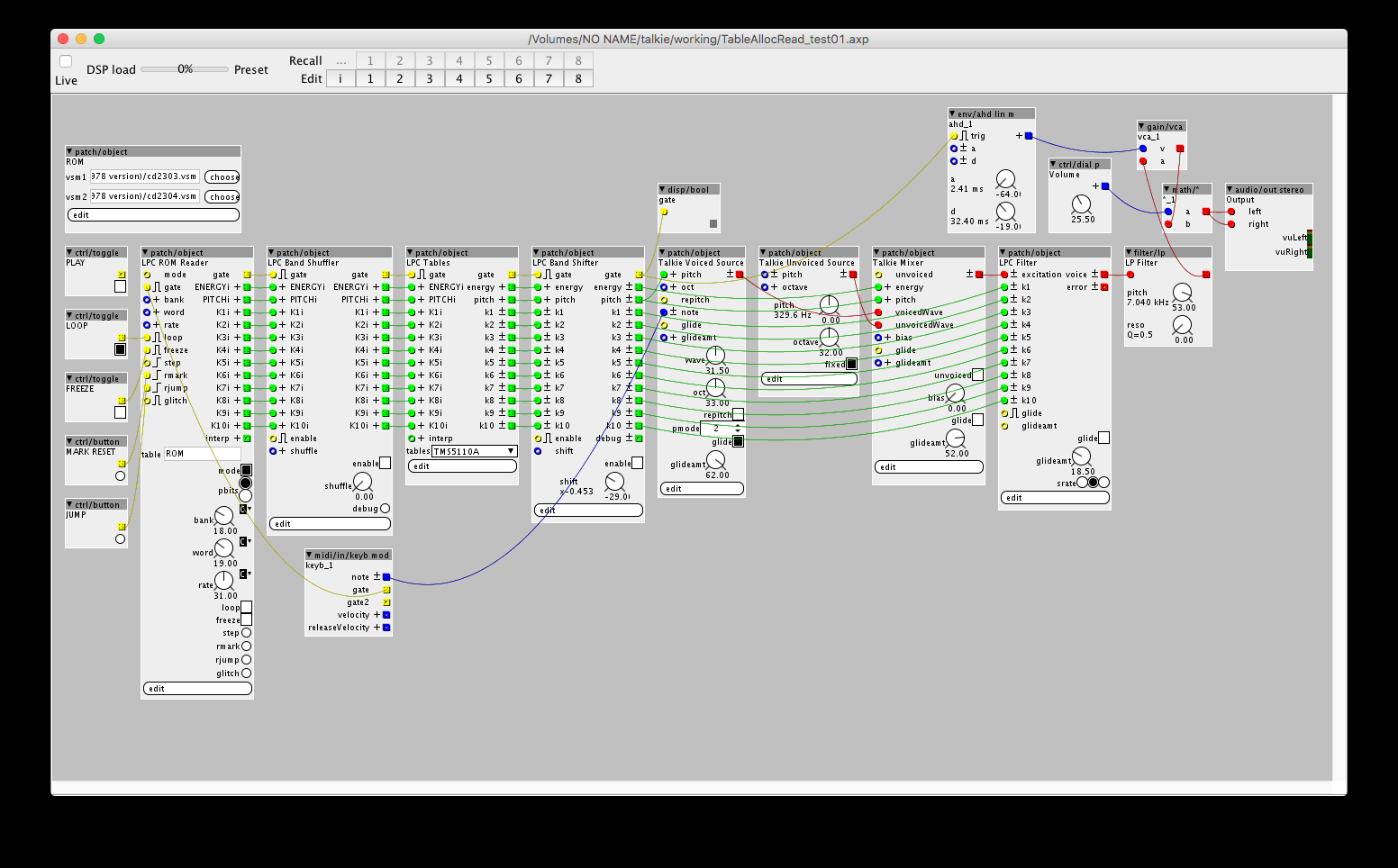Work in progress.
A collection of modules based on an emulation of parts of the Texas Instruments LPC (Linear Predictive Coding) system, famously used in the 'Speak & ...' series of electronic learning aids.
Initially based on the Talkie library for Arduino by Peter Knight (hence the name), but I ended up going back to the source of much of his code, the LPC code developed for the MAME arcade/vintage computer virtual machine application.
I decided that, rather than simply porting the Arduino code to a single Axoloti object, it would be more fun to break out all the different parts of it into discrete objects.
So far, I've created voiced and unvoiced (noise) oscillators, a mixer, a controller object and the 10th-order formant filter. I've also made an object for glitching things up a bit, by reordering the connections to the filter bank bands.
I've added many new options and parameters to the objects that weren't present on the original implementation, but tried to stay largely true to the original sound (i.e. it's still all 8-bit and runs at the original 8kHz).
Next to tackle the ROM and main controller emulation.
Update:
I've got playback working (with apologies to Suzanne Vega)!
Next, to implement those classic circuit-bent sounds, but with more control than the real thing.
a|x

